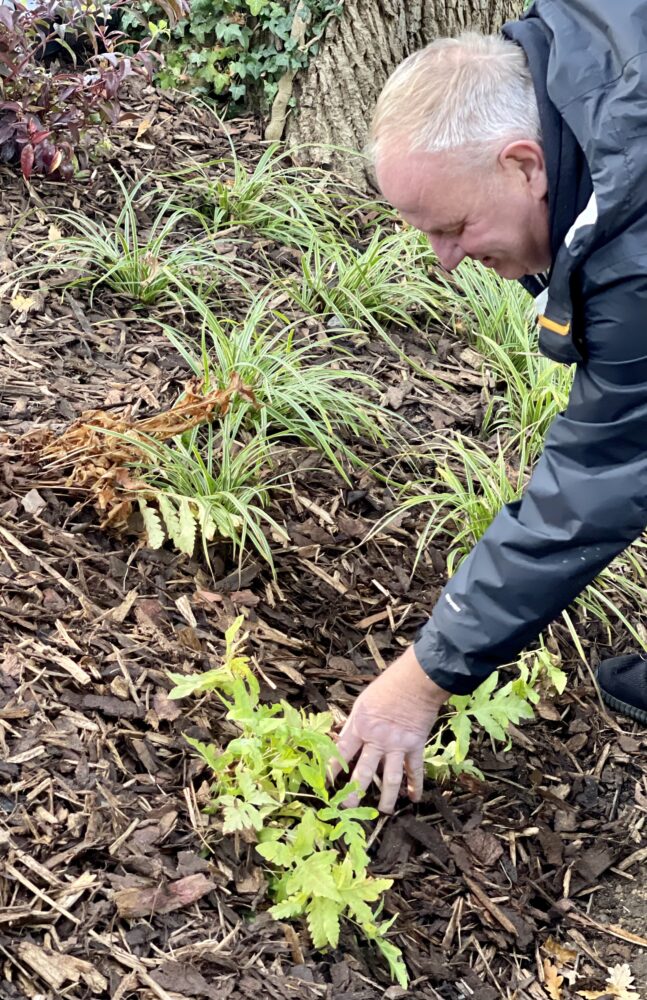Multiple wheelbarrows of mulch have made their way to Church Gill: our new magical wooded area filled with wonderful specimens from Kevock Plants in Edinburgh. The Kevock team has reimagined the space where, at the turn of the 20th Century, former Hever owners the Astors would have walked on their way to church.
Three blue Monet-style bridges ford the stream, and it is home to thousands of plants that enjoy shade and rocky conditions. Epimediums, ferns, grasses and hundreds of other species have benefitted from mulching here, to retain moisture and support them through the winter months. We use organic bark mulch, but re-using and making your own mulch is perfectly possible.
Making do
Using what you have available and making do is something that our parents and grandparents were often really good at, and being thrifty is at the heart of organic gardening. With the cost of living crisis biting, I know plenty of gardeners who are forgoing buying ready-made mulch and making their own from leaf mould or using well-rotted compost. It’s relatively easy to do.
If you need mulch now, pile your leaves on the lawn and mow across them, cutting them into smaller pieces that can be deposited around your plants. Otherwise, you can collect and compost them (making leaf mould) for next year.

Compost is not a mulch, but it works well beneath bark or leaf mulch to retain soil and nutrients. Hever’s Moat Restaurant has been saving and composting coffee grounds for us over the last couple of years: this has made for a nutrient-rich addition to our planted areas.
Compost can be great for suppressing weeds and improving the soil. You can use kitchen scraps, and also spent garden waste to your compost bin. Remember to ‘turn’ the compost every couple of months. If you’re new to the process, you’ll need to give yourself 12 months before the composted kitchen waste and garden cuttings are ready for use.
November = rose husbandry
The roses are finishing their second flush and bolting skywards in search of November’s diminishing light, so now is a good time to prune them back.
The general rule for this, whatever the size, is to cut back by a third at this time of year. Shorter plants will help prevent too much sway when the storms blow in – if you don’t prune roses back they can get root damage from too much movement.
November is also a great time to think about bare root roses: they’re much cheaper to purchase than potted ones. You can buy them via mail order – they’ll arrive without soil. Give them a good drink, dig a hole in richly composted soil, add bonemeal and pop them in place. If you grow bare roots then the roses will be established in June and reward you with fantastic blooms.
Visit Hever Castle and Gardens, and find Neil’s other columns here.






